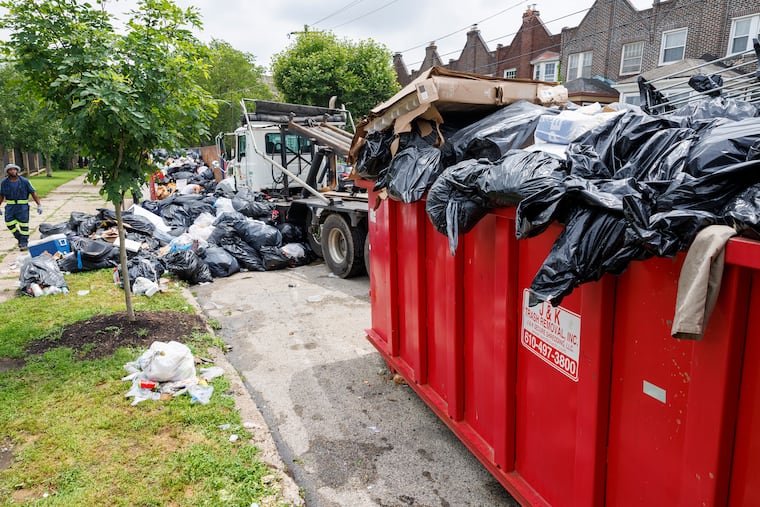Philly residents discuss using trash drop-off sites amid union strikes in their community.
On Wednesday, Day 2 of a strike involving 9,000 municipal workers in Philadelphia, residents are beginning to feel the repercussions throughout the city, a locale renowned for its strong union presence. The issue of waste management has become particularly pressing, as the absence of sanitation workers has led to increasing piles of refuse in neighborhoods across the region.
In response to the growing accumulation of garbage, Mayor Cherelle L. Parker’s administration established 61 temporary trash drop-off sites to provide residents a way to dispose of their waste. However, the utilization of these facilities has sparked intense debate, even among staunch labor advocates. Many are questioning whether accompanying these drop-off sites might be tantamount to “scabbing,” which traditionally refers to crossing a picket line to undermine a strike.
Public sentiment seems to lean toward support for District Council 33, an affiliate of the American Federation of State, County and Municipal Employees, representing sanitation workers who walked off the job at midnight on Tuesday. Reports highlighting the challenging working conditions, often amidst harsh weather and insufficient pay—an average salary of ,000, qualifying many for public assistance—have resonated strongly with the community.
Residents are torn over how to navigate the situation. While some refuse to cross the picket lines at the city’s six operational trash convenience centers, there have been reports of individuals discarding garbage near these facilities. Simultaneously, the temporary drop-off sites raise questions about the implications for the union’s strike, which relies heavily on public support.
The discussion has proliferated on social media platforms, with supporters of the union arguing that these drop-off locations are detrimental to the strike’s objectives. Contentious exchanges center around whether using these sites provides necessary relief or weakens the union’s bargaining power. In real-life scenarios, graffiti messages urging residents against crossing the picket line have appeared near overburdened drop-off sites, reflecting community friction.
Despite these community concerns, some residents assert that their civic duty compels them to engage with the temporary sites, viewing their actions as necessary to maintain public health standards. Others acknowledge the imbalance created by the overflowing trash, especially in neighborhoods already plagued by litter and rodent issues. The ongoing strike highlights systemic challenges in balancing labor rights with community welfare, emphasizing the need for clear communication from city officials regarding the appropriate course of action during this period.
The city’s efforts to mitigate the situation have included multiple daily swaps of full trash containers for empties, yet inconsistencies in site activity have led to significant trash overflow, resulting in unsightly and unsanitary conditions. As residents share images of these crowded drop-off locations on social media, the necessity for informed dialogue surrounding labor actions and community impact becomes increasingly apparent.
City officials, including Crystal Jacobs Shipman, the Sanitation Commissioner, asserted that they are mobilizing various resources to address the garbage crisis. Meanwhile, Mayor Parker, who has positioned herself as a pro-labor leader, refrained from disclosing specific details about the trash collection process when questioned.
As the strike continues, the community struggles to balance its support for striking workers with the immediate, pressing needs of maintaining public health and cleanliness. The dialogue surrounding the situation in Philadelphia exemplifies the broader challenges faced by cities navigating labor disputes and community welfare.
Media News Source







